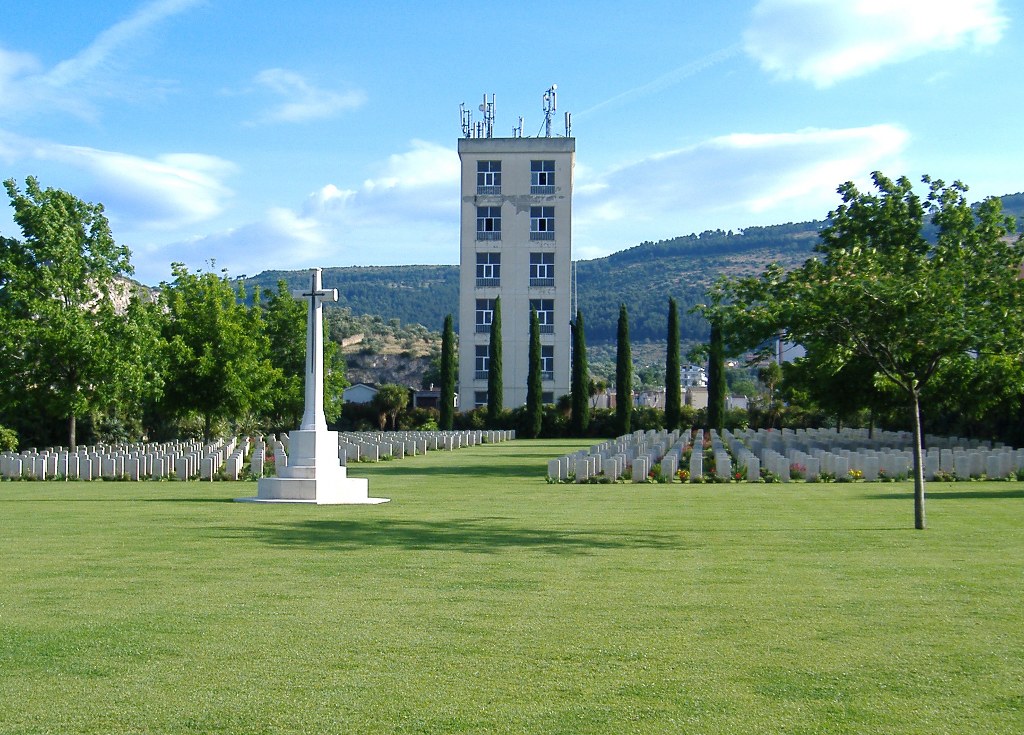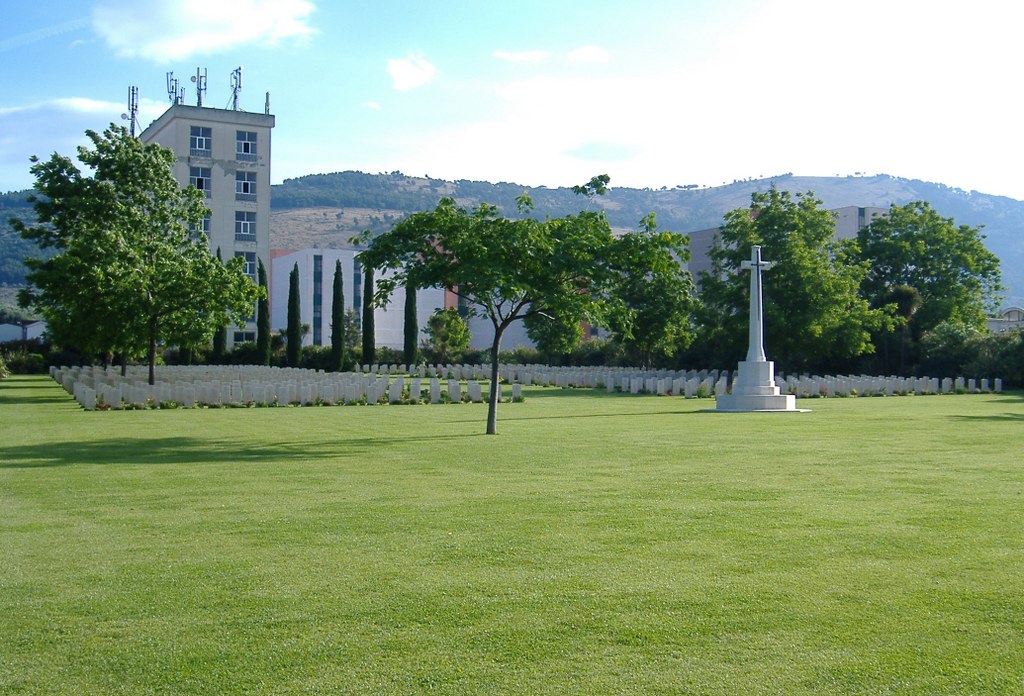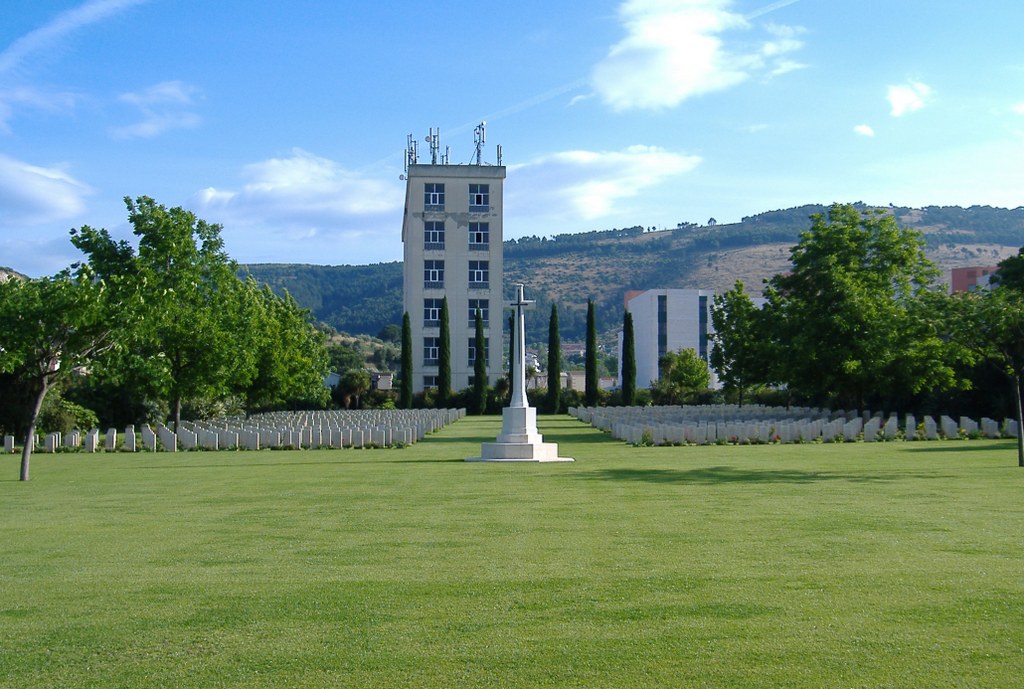Caserta War Cemetery
- Country Italy
- Total identified casualties 756 Find these casualties
- Identified casualties from Second World War
- GPS Coordinates Latitude: 41.08831, Longitude: 14.34346


SHARE STORIES OF THE ITALIAN CAMPAIGN
If you'd like to know more about who we commemorate, visit For Evermore: Stories of the Fallen, the CWGC online commemorative resource. Here you can read and share the fascinating stories from some of the people who took part in the Italian Campaign.
Location information
Take the autostrada A1 (Roma to Napoli), and leave it at the Santa Maria Cupua Vetere exit. At the roundabout follow the signs for Caserta. After 7 kilometres; after the tunnel, take the first exit "Zona Ospedaliera" on the right. After 100 metres, at the roundabout turn right to reach the parking area of the communal cemetery. At the end of the car park you will find the entrance gate to Caserta War Cemetery. Cemetery address: Via Generale Luigi Talamonti, 5 - 81100 Caserta (CE) Campania.
Visiting information
CASERTA WAR CEMETERY
Caserta War Cemetery is on the edge of the town of Caserta, approximately 36 kilometres from Naples, in the Caserta province of the Campania region of Italy.
ARRIVAL
Routes to the Municipal Cemetery, in which Caserta War Cemetery is located, are signposted.
PARKING
There is a large public car park attached to the municipal cemetery. The main entrance to the cemetery from the car park opens into Caserta War Cemetery.
ACCESS, LAYOUT AND MAIN ENTRANCE
The cemetery is rectangular shaped.
A double 2.5-metre-wide gate, with 2 tall metal sections, opens inwards to the cemetery from the car park. There is a small step up from the car park to the entrance gate. A long, level grass area leads into the cemetery, approximately 40 metres long.
There is a memorial shelter at one end of the cemetery, approached from the main entrance of the cemetery. There is a soil edge between the grass and a stone step up to the shelter on three sides of the building.
Inside the memorial shelter is a stone bench and seating area.
The Register Box is on the wall of the memorial shelter.
The Cross of Sacrifice is approached from the main entrance, approximately 30 m from the memorial shelter.
Internal paths throughout the cemetery are grass and flat.
ALTERNATIVE ACCESS
An additional access route is through the large service gate which is approximately 3.5 metres wide. This gate is also locked during the hours where the gardeners are not present.
The closest access into the cemetery from the carpark is via the main entrance as detailed above
ADDITIONAL INFORMATION
The cemetery gates are locked outside of the gardeners’ working hours. Opening times are as follows:
WINTER: 0800 – 1200 hrs 1300 – 1530 hrs
SUMMER: 0730 – 1200 hrs 1300 – 1600 hrs
There is a combination padlock on the gate (code is 1221) for access outside of normal working hours.
History information
On 3 September 1943 the Allies invaded the Italian mainland, the invasion coinciding with an armistice made with the Italians who then re-entered the war on the Allied side. Allied objectives were to draw German troops from the Russian front and more particularly from France, where an offensive was planned for the following year.
The Royal Palace at Caserta served as headquarters for the Allied armies in Italy for the greater part of the duration of the Italian campaign and the 2nd General Hospital was at Caserta from December 1943 until September 1945. Some of those buried here died in the hospital, others as prisoners of war (there was a POW Hospital at Caserta) before the Allied invasion. There are also a few burials from the October 1943 fighting on the River Volturno, which lies not far away to the north.
Caserta War Cemetery contains 768 Commonwealth burials of the Second World War.
The cemetery was designed by Louis de Soissons.




